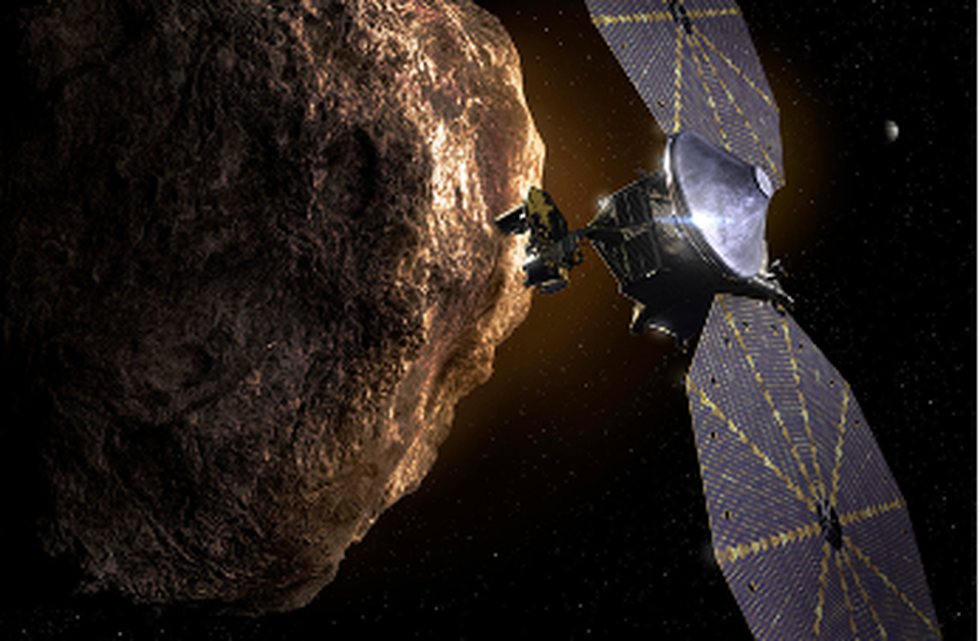About Lucy Mission:
- NASA’s Lucy mission is the first spacecraft launched to explore the Trojan asteroids, a population of primitive asteroids orbiting in tandem with Jupiter.
- Lucy was successfully launched Oct. 16, 2021, and will visit eight asteroids over 12 years — one asteroid in the main belt between Mars and Jupiter, and seven Trojan asteroids leading and trailing Jupiter in its orbit.
What are Trojan Asteroids?
- Asteroids sharing an orbit with a planet, but which are located at the leading (L4) and trailing (L5) Lagrangian points, are known as Trojan asteroids.
- These asteroids occupy a stable Lagrangian point in a planet’s orbit around the Sun.
- Trojan Asteroids are some of the oldest remnants from the formation of our solar system 5 billion years ago.
- There are currently over 4,800 known Trojan asteroids associated with Jupiter.
- They orbit the Sun in two loose groups: one group leading ahead of Jupiter in its orbit, the other trailing behind at the same distance from the Sun as Jupiter.
- Due to the combined gravitational influences of the Sun and Jupiter, these Trojan asteroids have been trapped on stable orbits (around what is known as the Lagrange Points) for billions of years.
What is a Lagrange point?
- Lagrange Points are positions in space where the gravitational forces of a two body system like the Sun and the Earth produce enhanced regions of attraction and repulsion.
- The Lagrange Points are positions where the gravitational pull of two large masses precisely equals the centripetal force required for a small object to move with them.
- These can be used by spacecraft to reduce fuel consumption needed to remain in position.
